Repositories in DataKubes
The Repositories is the place where you keep all the information of your project
Saving data is the foundation of your organization's project, and at Datakubes, we have repositories where you can store all the data for your project or organization. In this documentation, you will find everything you need to know to create your project's repository.
Step 1: To create your repository, the first thing we need to do is go to the "Resources" section in our Orchestrator's toolbar.
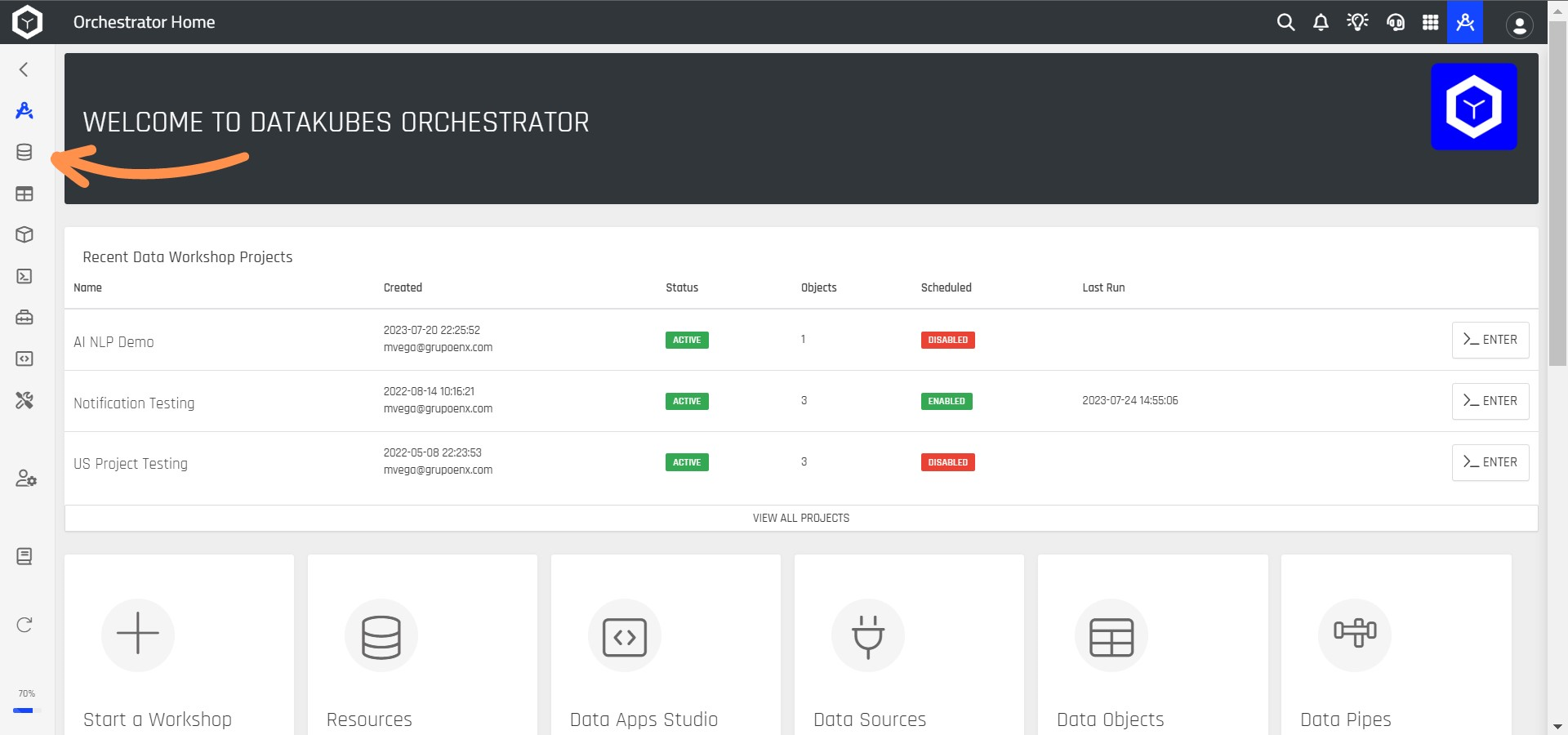
Step 2: Next, click on the "+ CREATE DATA REPOSITORY" button.
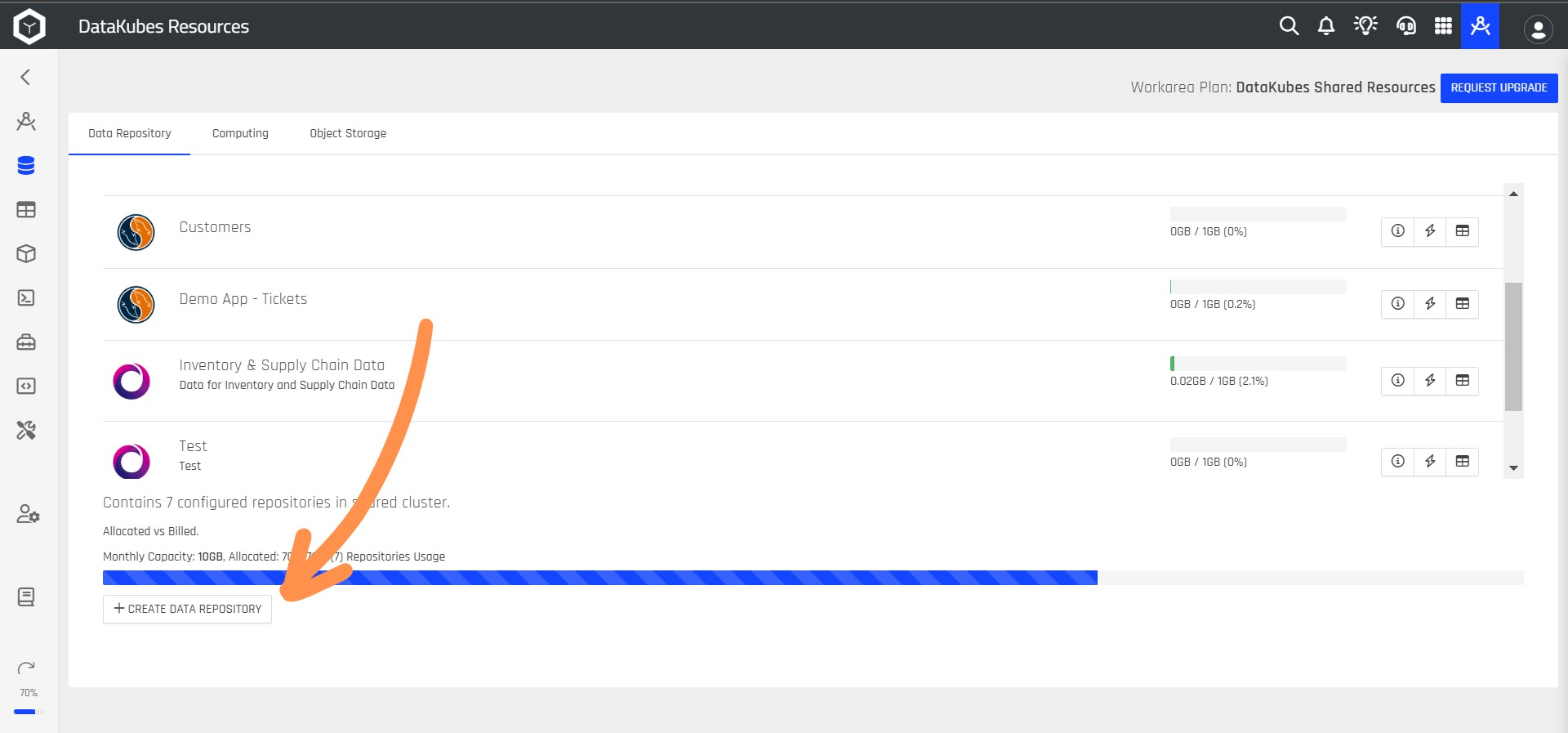
Step 3: After clicking, the following screen will open.
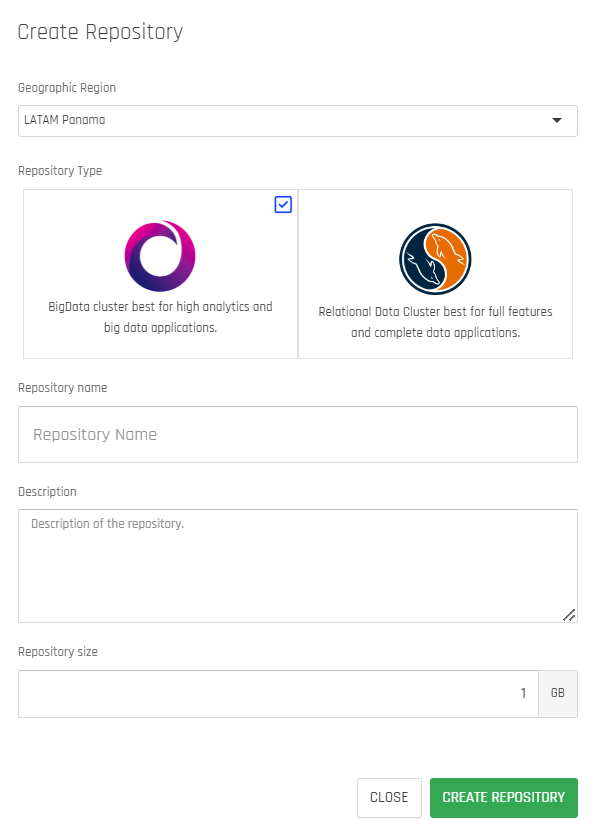
To create your project's repository, you'll need to fill out the following form. We will explain each part in detail below.
- In the "Geographic Region" section, you should select the geographical region of our servers where you want your data to be stored.

- In the next section, "Repository Type," you must select the engine for your repository. You have the option to choose between Singlestore (the purple one) and MySql (the orange and blue one). The choice of the engine will depend on the purpose of your project, but we will assist you. If your project involves a large amount of data, and by large, we mean massive, we recommend using Singlestore, which is designed to handle vast amounts of data. However, if your project requires more instant data transactions, we recommend using MySql.
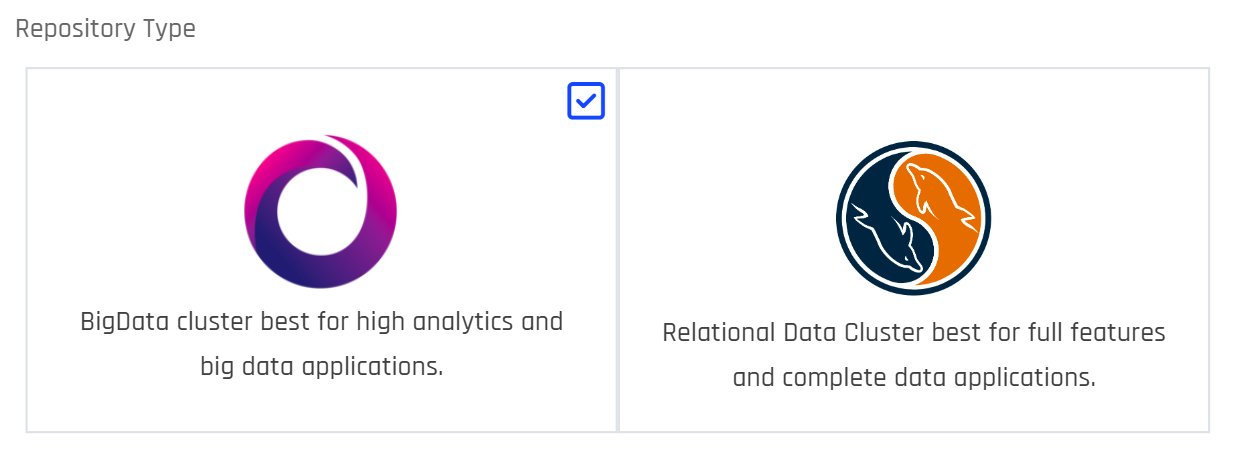
- Finally, you should give your repository a name and, if desired, provide a description of the repository you are creating. Also, select the size of your repository, which ranges from 1GB.

Both database management systems use the same query language, which is SQL.
Step 4: After creating our repository, we can view it in the "Data Repository" section, where it will be listed, and we can see the consumption of each one.

Step 5: Once we've created our repository, it's necessary to create a "Bucket" for our project. This will help us store images or documents that we submit through our forms. To create them, we should go to the "Object Storage" section.

Step 6: Click on the "+ CREATE BUCKET" button.
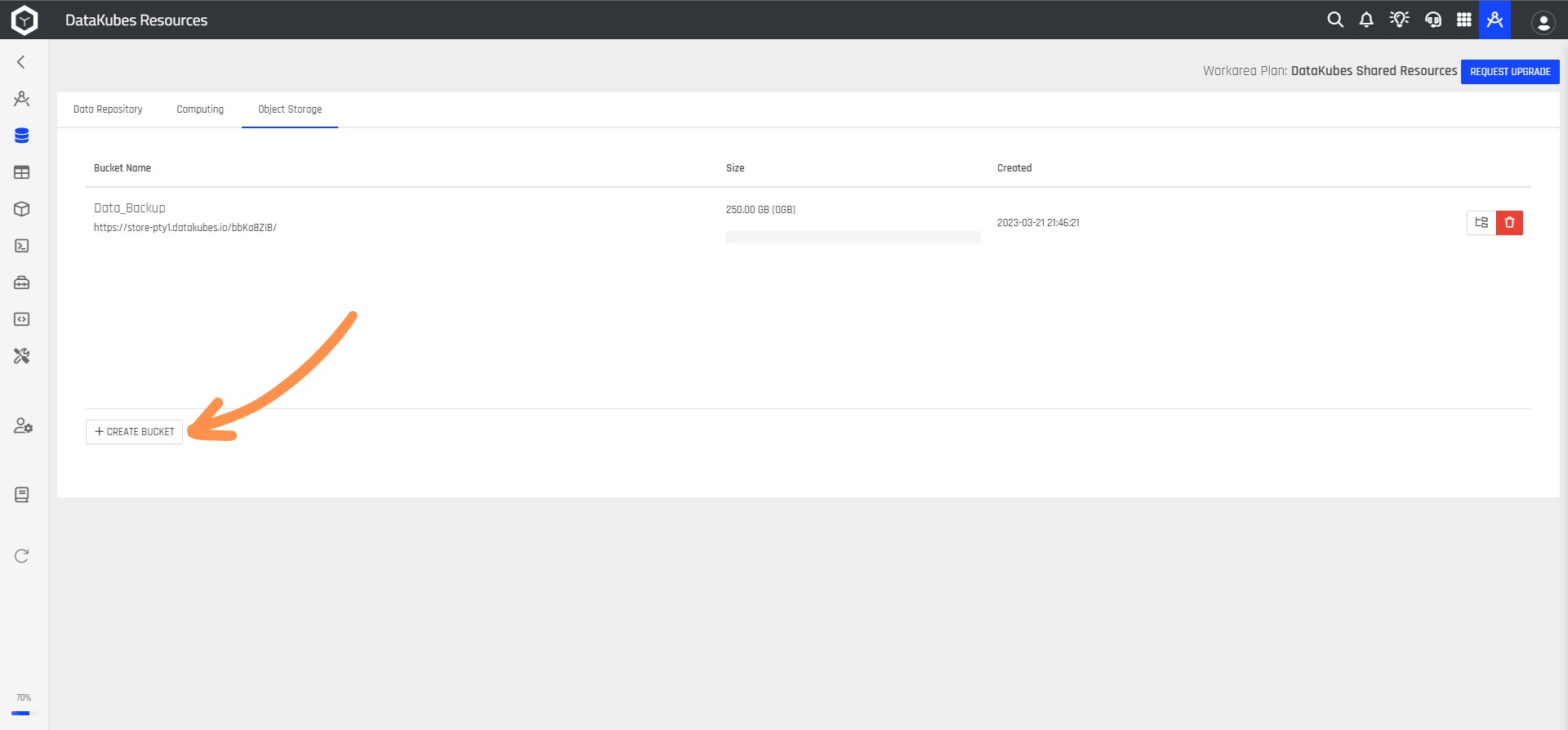
Step 7: After clicking "+ CREATE BUCKET," the following screen will appear. Here, you must specify the name of your bucket, provide a description if desired, and finally, select the size of the bucket, which has a minimum size of 250 GB by default.
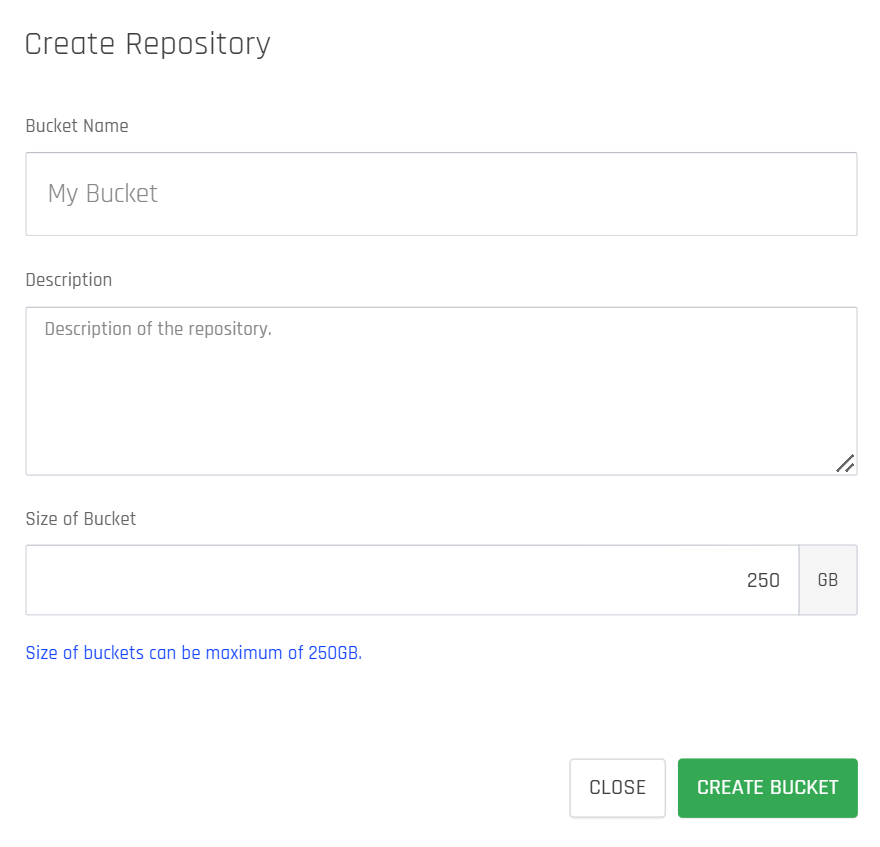
Step 8: Finally, we can see our Bucket listed, along with the amount of space we have used.
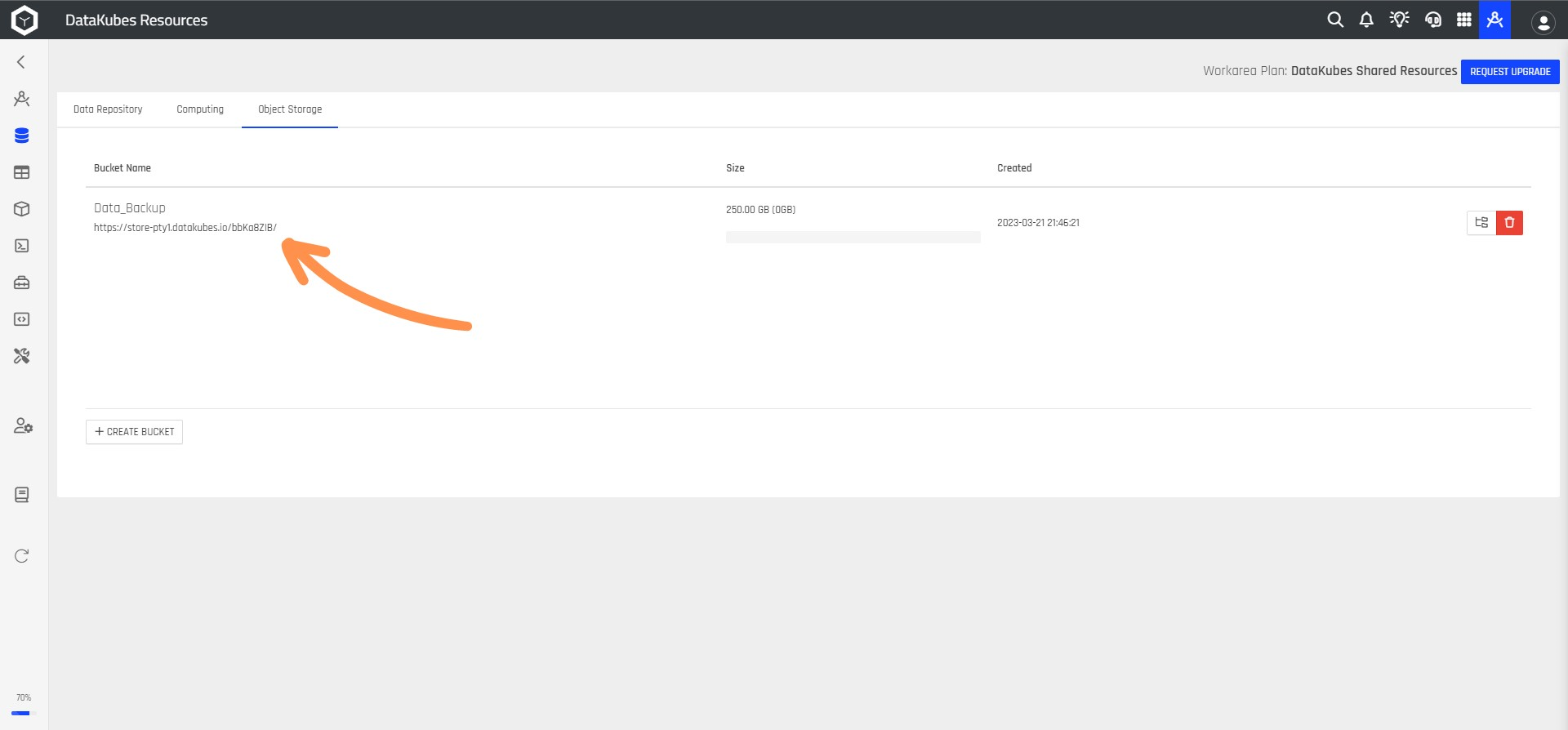
In your DataApps, you must specify the Bucket that will be used to store images or documents.
All set!
With the creation of your repository and bucket, your project is ready to store all the data.
DataKubes RepositoriesRepositories allow you to integrate native tools in DataKubes, such as DataPipes for data extraction into the repositories, DataForms for creating data collection forms, and Alert Rules for monitoring and sending notifications on detected events.
Repositories enable configuration of different native tools in DataKubes.
| Repository Tools | Description |
|---|---|
| DataObjects | A set of tools that allows you to manage objects in the repositories, such as tables and views. |
| DataPipes | This allows creating data extraction pipelines between external data sources and DataKubes repositories. It allows mapping tables between both sources and extracting copies or changes from sources to repositories. |
| DataForms | This tool is useful for creating forms for data collection in the field or online, in a simple and efficient way. Each form is mapped to a repository table. |
| Alert Rules | Alert rules allow creating processes that analyze data in the repositories based on defined SQL or an existing Kube to find matches. Once found, they are sent as notifications to the WEB platform, email, and mobile apps, according to the user sessions configured in the alerts. |
| Projects ML | This tool allows creating recurring processes that read data in repository tables, perform complex calculations or analyses, and send their results to another destination table in the repository. It allows creating complex analysis solutions to solve complex problems in organizations using AI/ML. |
| Kubes | Visual Designer for creating Data Cubes stored in repositories, used for creating Presentations, Dashboards, Insights, Relational Search Network, and other DataKubes tools. It is the logical representation of data. |
| Buckets | Buckets are specially designed to store images and documents uploaded from the DataApps you create for your project. It is necessary to assign a bucket in the DataApps to store this data. |
Updated 11 months ago
